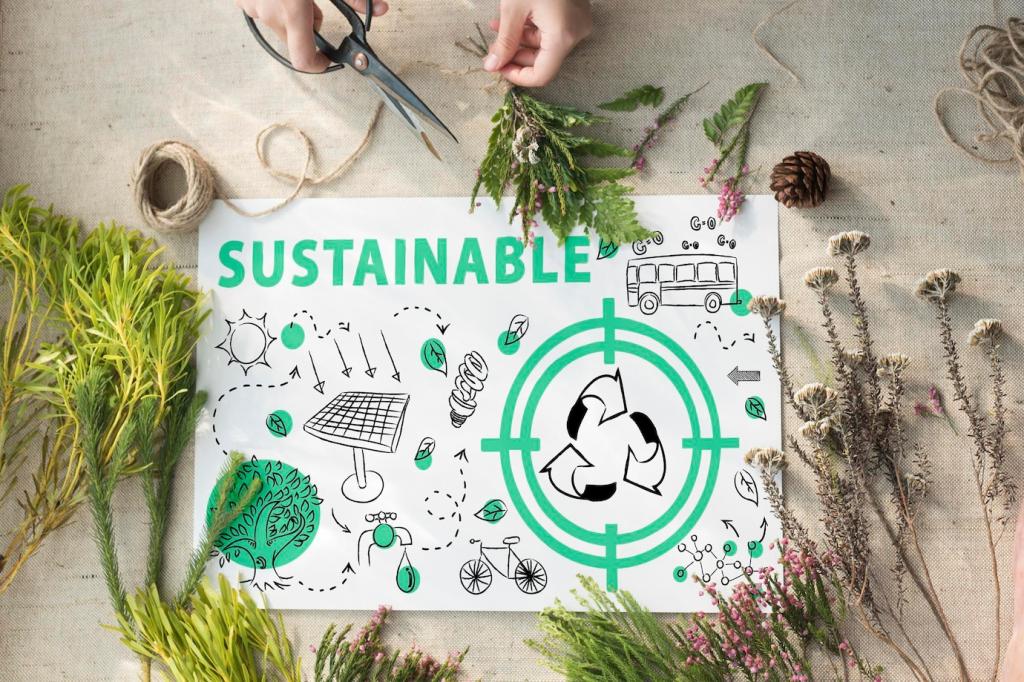
Eco-Conscious Decorating on a Budget
Creating a beautiful, stylish home doesn’t have to be expensive or come at the expense of the planet. Eco-conscious decorating on a budget is about blending sustainable choices with creative thinking, making use of affordable resources while reducing waste and carbon footprint. This approach empowers you to design living spaces that reflect your values and personality, all while being mindful of the environment and your finances. Whether you’re revamping one room or your entire home, there are countless ways to embrace eco-friendly methods without sacrificing style or your bottom line.

Vintage Furniture Revival
Vintage furniture offers character and durability often unmatched by mass-produced pieces. Reviving these finds can be as simple as a deep clean, reupholstering, or a fresh coat of non-toxic paint. Older furniture is typically constructed with solid wood and traditional craftsmanship, which translates to longevity. By bringing vintage pieces into your home, you benefit from quality, style, and the satisfaction of rescuing items from landfill. The process of refreshing vintage finds also allows for customization, letting you infuse personal flair while staying green.

Decor Accessories with a Past
Accessories like lamps, frames, vases, and rugs can be sourced second-hand for a fraction of retail prices. These items often have unique details that stand out in modern interiors. From ornate picture frames to quirky ceramic vases, browsing thrift stores allows you to discover affordable gems while keeping usable items in circulation. Incorporating these well-loved pieces not only evokes a sense of nostalgia but also lessens your environmental impact by reducing the need for new materials and manufacturing.

Upcycling with Purpose
Upcycling transforms discarded materials or outdated items into something fresh and functional for your home. This could mean turning old wooden pallets into coffee tables, or mason jars into stylish storage. Upcycling nurtures creativity and enables major cost savings, all while actively diverting waste from the landfill. Each project celebrates resourcefulness and helps to forge a home that feels personal, inventive, and environmentally considerate. Through upcycling, even everyday objects gain new life and new purpose.
Choosing Sustainable Materials
01
Natural Fibers and Fabrics
Natural fibers such as cotton, linen, jute, and wool are both comfortable and planet-friendly. When choosing textiles for upholstery, curtains, and rugs, opt for those made from organic or recycled sources. These fabrics not only enhance air quality by avoiding synthetic chemicals, but they also add warmth and texture to interiors. Buying remnants or offcuts can lower costs, while supporting more sustainable supply chains. Infusing your space with these tactile fabrics is a simple, cost-effective way to decorate mindfully.
02
Low-Impact Wall and Floor Options
Eco-conscious wall and floor choices range from reclaimed wood and bamboo to low-VOC paints and tiles made from recycled materials. Such options minimize environmental harm by either reducing the need for new raw resources or lowering emissions. Bamboo is particularly popular due to its affordability and rapid regrowth rate, making it an ideal choice for budget-friendly decorating. Applying a fresh coat of eco-friendly paint or installing reclaimed flooring can dramatically update a space while maintaining environmental responsibility.
03
Repurposed and Local Materials
Utilizing repurposed or local materials in decorating is both budget-smart and environmentally friendly. Salvaged bricks or stones, local timber, or even old windows and doors can become striking design features. Sourcing materials close to home lowers transportation emissions and supports local businesses. Repurposing what’s available not only saves money, but also adds character and tells a story within your décor, making your home uniquely inviting and ecologically balanced.
DIY Décor Projects
Creative Wall Art from Recycled Materials
Breathe life into your walls using art created from recycled materials like old magazines, newspaper, or fabric scraps. Collages, decoupage, or framed fabric remnants offer an inventive way to incorporate color, texture, and personal meaning while diverting waste. Rather than buying mass-produced artwork, DIY wall décor is a budget-friendly alternative that celebrates sustainability and showcases your individual style. The materials are often free or extremely low-cost, making this a perfect option for eco-conscious decorators.


Handmade Soft Furnishings
Sewing your own cushion covers, throws, or curtains from upcycled or remnant fabric brings warmth and individuality to your interiors. By reusing existing materials, you avoid the resource-intensive process associated with producing new textiles. Soft furnishings are often easy to update or refresh seasonally without major expense. Simple sewing techniques and straightforward materials can yield surprisingly professional results. This approach gives old fabric a new lease of life while reducing costs and environmental impact.
